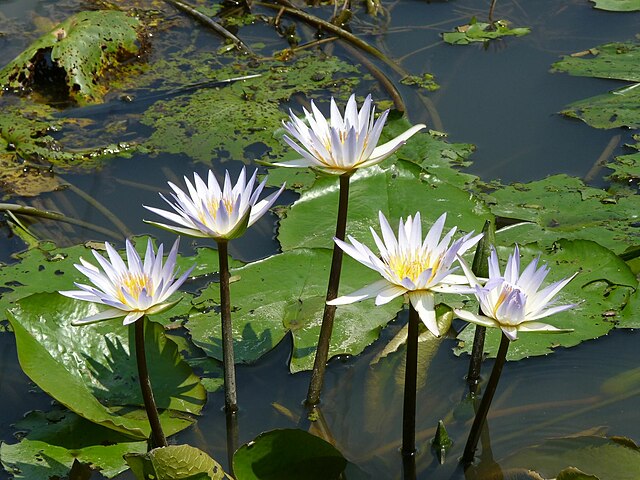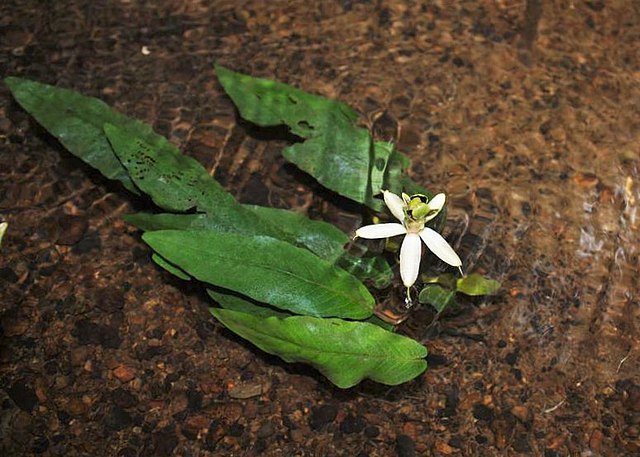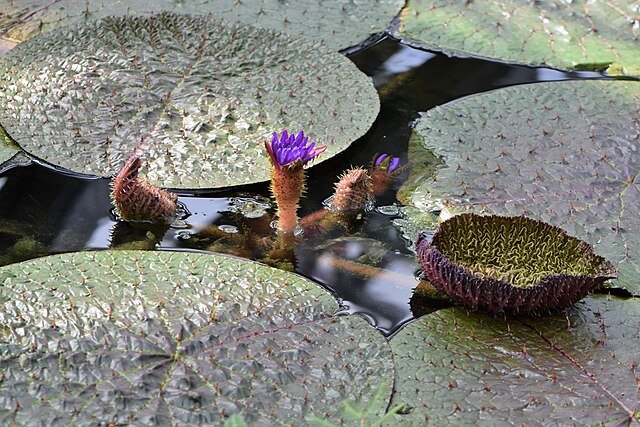Victoria or giant waterlily is a genus of water-lilies, in the plant family Nymphaeaceae, with very large green leaves that lie flat on the water's surface. Victoria boliviana has a leaf that is up to 3 metres (9.8 ft) in width, on a stalk up to 8 metres (26 ft) in length. The genus name was given in honour of Queen Victoria of the United Kingdom. It pushes other water plants aside as it spreads out until only those of its kind remains. When this happens it has nearly completely cut out the sunlight from getting to any plants below the water limited only by circle packing.
Victoria (plant)
A woman standing on a leaf of Victoria cruziana in the lily pond in front of the Linnaean House of the Missouri Botanical Garden. A wooden plank and a towel is placed on the pad to distribute the weight over the leaf's surface.
Image: Victoria amazonica edit 1
Image: Victoria cruziana flower
Nymphaeaceae is a family of flowering plants, commonly called water lilies. They live as rhizomatous aquatic herbs in temperate and tropical climates around the world. The family contains five genera with about 70 known species. Water lilies are rooted in soil in bodies of water, with leaves and flowers floating on or emergent from the surface. Leaves are round, with a radial notch in Nymphaea and Nuphar, but fully circular in Victoria and Euryale.
Nymphaeaceae
Flowering Barclaya longifolia specimen, Thailand
Flower of Victoria cruziana, Santa Cruz water lily
Flowering Euryale ferox specimen cultivated in the Botanischer Garten Berlin-Dahlem, Germany







